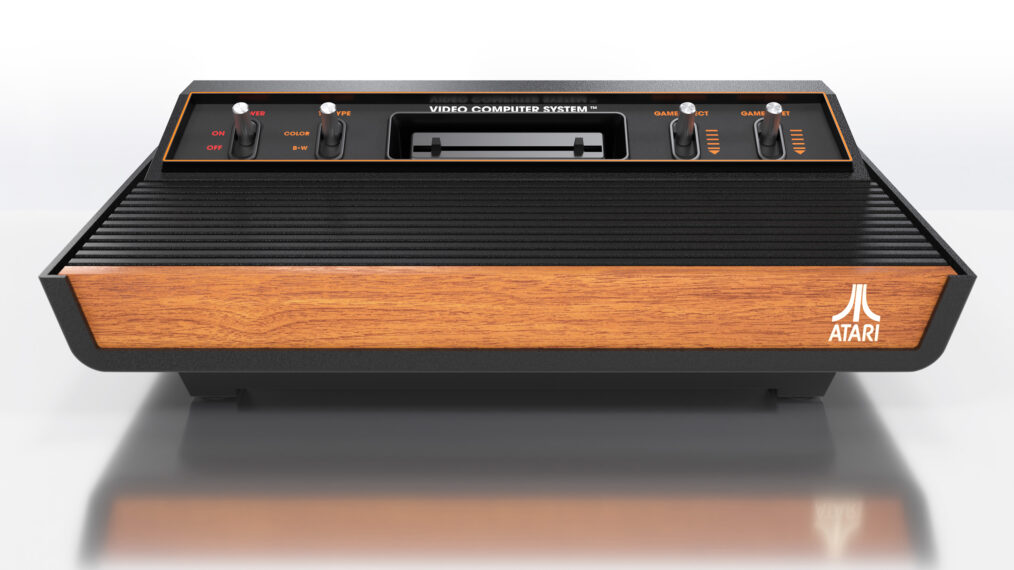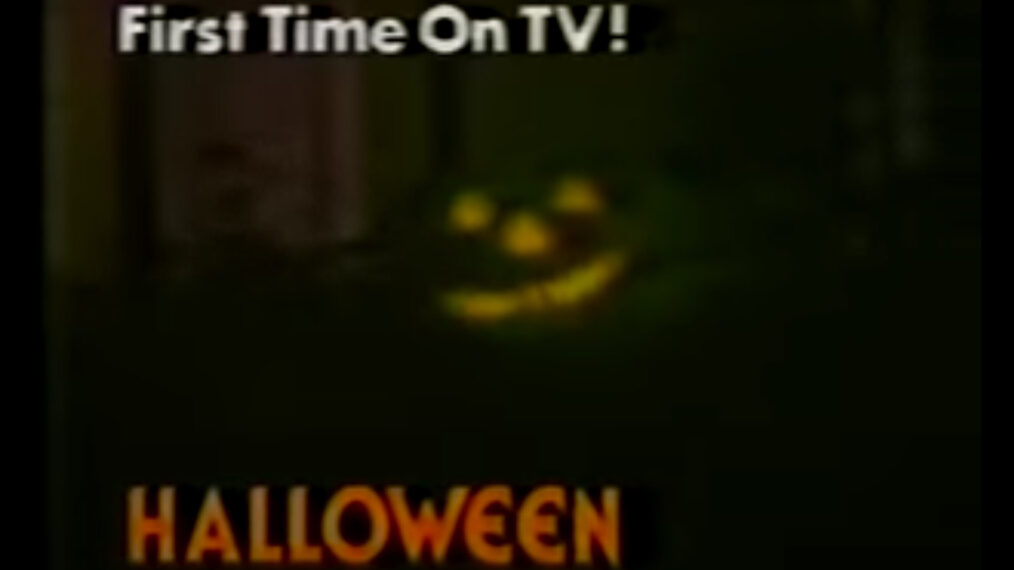I Still Can’t Believe ‘The Texas Chainsaw Massacre’ & ‘Halloween’ Were Adapted Into Atari 2600 Video Games
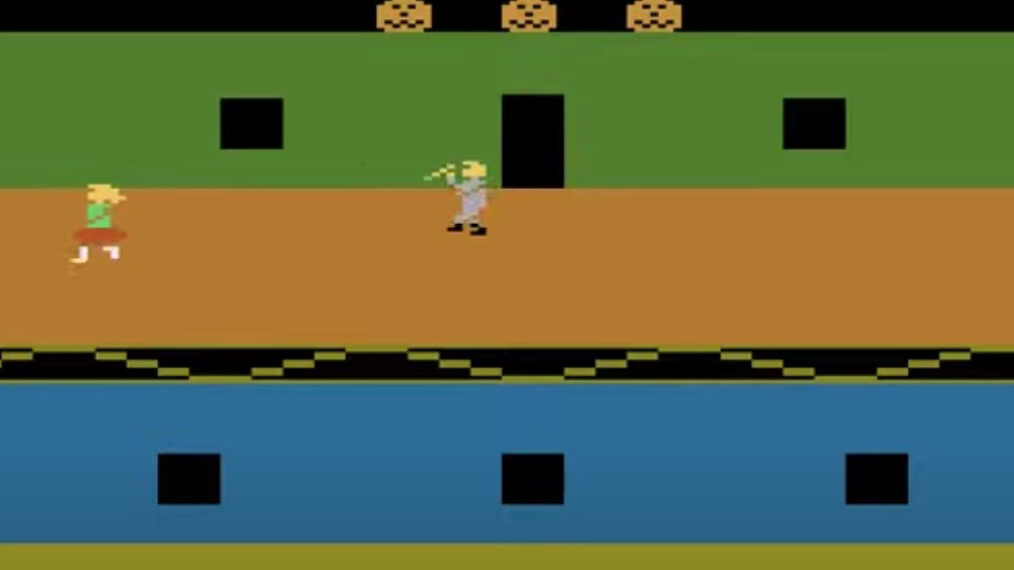
When thinking back on the library of games that were created for the good old Atari 2600 (VCS), most people probably don’t associate it with horror-themed titles.
The most likely one that might come to mind if pressed would be 1982’s Haunted House, an Adventure-like game published by Atari that is pretty fun and has some surprising moments for a player involving ghosts, bats and the like, but is not truly graphic or horrific by any stretch (even if some consider it to be among the earliest “survival horror” game.
Another game that a fewer group of people might recall is 20th Century Fox’s video game adaptation of its 1979 sci-fi horror movie Alien. However, that title did not at all replicate the story or shocks of its R-rated source material; it was basically one of the million Pac-Man-like maze games that flooded the market in the early ’80s, and it seems to have thrown in some elements of Berzerk, Robotron 2084 and Wizard of Wor, for good measure.
(At least it made some sense to try to adapt a film like Alien into a video game; the same cannot be said of Fox’s attempt at also adapting its 1981 R-rated teen sex comedy Porky’s into an Atari game.)
But there were two games based on R-rated horror movies, both published in 1983 by the now-gone Wizard Video Games, that made efforts at somewhat following their source films’ stories and even attempted to re-create some of their slasher-movie violence (despite the challenge of effectively presenting it via the 2600’s limited technical capabilities).
Those games were Halloween and The Texas Chainsaw Massacre, and they were apparently among some of those Atari 2600 games that my friends and I had heard rumors about in the early ’80s — controversial games meant for adults that actually featured sex and violence, and were kept behind the counters of the (probably very few) stores that carried them.
I don’t recall hearing about these two titles specifically among the rumors at the time, but instead learned about them in recent years. When reading about them, and seeing them being played in YouTube videos, I had a hard time believing they were actually from the early ’80s; I thought they might have been some more recent “homebrew” creations by modern Atari 2600 aficionados.
But sure enough, Atari 2600 adaptations of Halloween and The Texas Chainsaw Massacre were actually on the market, in very limited supply, in 1983, and they basically represented Wizard’s entire catalog of games before the company went under. There isn’t any sex in the games, but their efforts at presenting violence and blood made them controversial at the time and, I think, help give them a place today as intriguing artifacts of that era in home video gaming.
Halloween (1983; Wizard Video Games)
“A homicidal maniac has escaped from a mental institution,” begins the first paragraph of the instruction manual for this game based on John Carpenter‘s classic 1978 horror film Halloween.
It continues: “On Halloween night, the killer returns to his home town to wreak havoc! You are babysitting for a family in a large, two-story house. Somehow the vengeful murderer has gotten inside! Can you protect the children and yourself from the fury of his knife?”
You can scroll down through the rest of the manual in the graphic below:
The plot of the game and the actions a character can take, as detailed in the language of these instructions, is certainly more intense than what you’d find in the manual for an average Atari 2600 game. Among other descriptive highlights:
“Using your joystick, move the babysitter through the house, dodging the killer as you search for the terrified children. … Somewhere in the house is a knife, which the babysitter may use to stab the killer. … If you are armed when the killer attacks, press the joystick button to thrust the knife. … CAUTION: Your thrust will be successful only if the killer’s knife is in the ‘up’ position. The killer will flee the room if stabbed. …
“Beware of electrical blackouts on the upper level, for the house is old and the wiring is faulty. At any moment, you may find yourself plunged into darkness with the killer in pursuit! … Successfully stabbing the killer twice OR rescuing five children advances you to the next level of play. … Listen for the ominous ‘HALLOWEEN’ theme music, which follows the maniac wherever he goes.”
There are references to the “killer/maniac,” and the “babysitter,” but no official names of characters from the movie like Michael Myers. I’m not sure why that is; I don’t see any references to Halloween the movie’s copyrights anywhere in the manual, but I’m assuming they had permission to use at least the film’s title and general concept, as well as its poster art on the box and manual. I’m not sure why the character names weren’t used.
But the game does use one of the film’s most crucial and recognizable elements: what the manual rightly calls “the ominous HALLOWEEN theme music,” which does, in fact, accompany the killer at every appearance.
While that can become redundant after a while, as you can hear in the longplay of the game featured in the video below, the Halloween theme actually is very well represented, at least by the standards of an old Atari game. Fans of “chiptune” music in particular will probably dig it.
Of course, as in any video game, no matter how long you play, eventually you’re going to lose. And in this game, that means the babysitter’s head gets cut off by the killer.
You can see that result in the image below, even if, as was often the case in these early video games, you have to use your imagination a little. The headless babysitter is in the green shirt, with bits of red representing blood where her head used to be; the killer, in grey, is raising his knife as if to strike once more while the blob at the bottom is a terrified child witnessing the decapitation. Not your standard Atari fare!
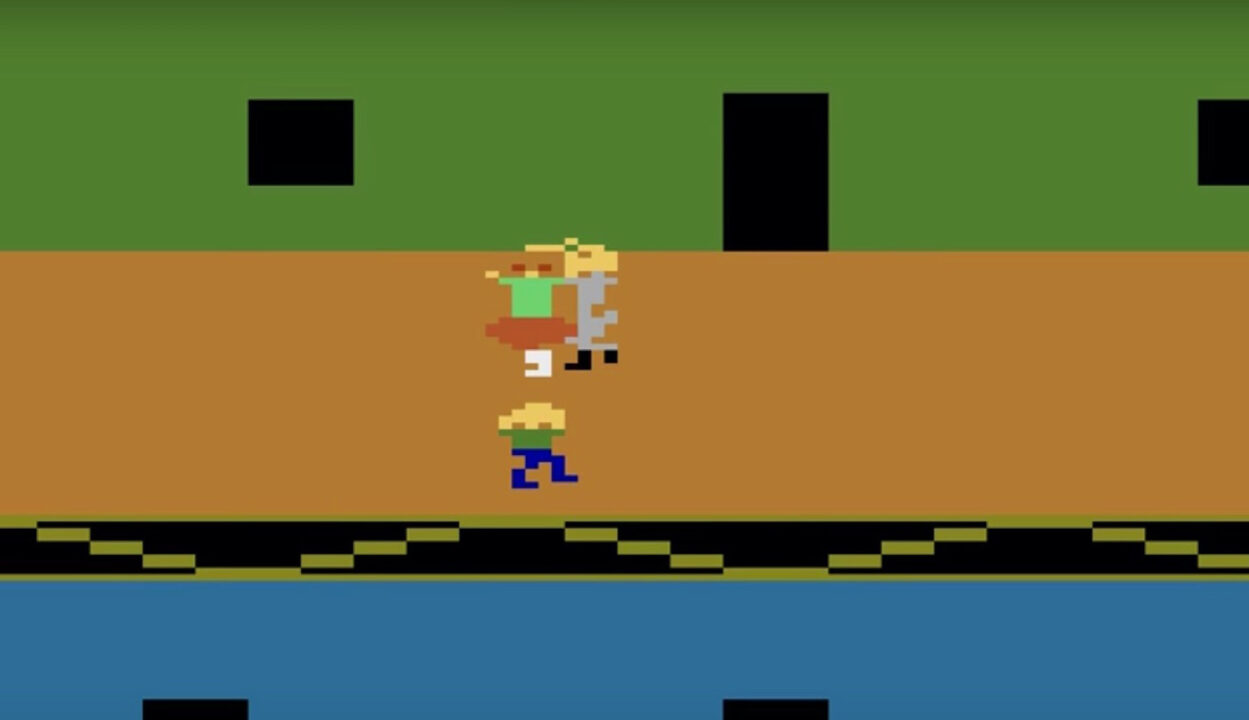
© 1983 Wizard Video. Screenshot: YouTube/@oldclassicgame
Interestingly, Halloween the video game likely features more blood than the original movie itself. Even if the “blood” was of an 8-bit sort, it still made the game more shocking than your average Atari 2600 cartridge, and it was likely a main reason why this title was kept behind the counter at the few stores that even carried it, and only sold to adults by request.
The Texas Chainsaw Massacre (1983; Wizard Video Games)
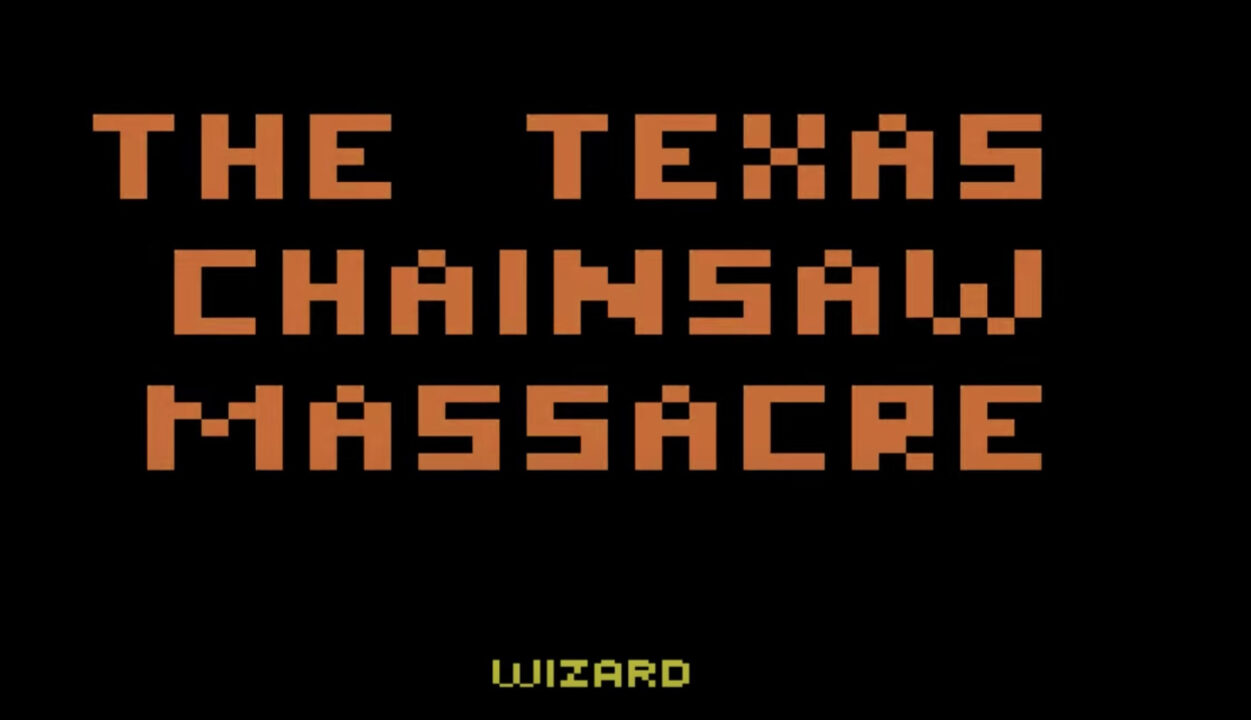
© 1983 Wizard Video. Screenshot: YouTube/@TriOptimum7
Before the Halloween game was released in October 1983, Wizard had released another slasher-movie-classic-inspired title a little over six months earlier: The Texas Chainsaw Massacre, based on Tobe Hooper‘s 1974 feature.
This one has an even more controversial premise. Rather than being a “survival horror” game in which you play a victim trying to flee a killer, here you are the killer. You control the infamous Leatherface, who racks up points by disposing of trespassers on his property using, of course, his handy title weapon.
Pictured below is an image from the game, a scene just following Leatherface’s dispatching of a victim, which earned the player controlling him 1,000 points. (The red areas around the chainsawed person are presumably blood. That long object extending from Leatherface’s lower portion is the chainsaw; he’s not just happy to see you.)
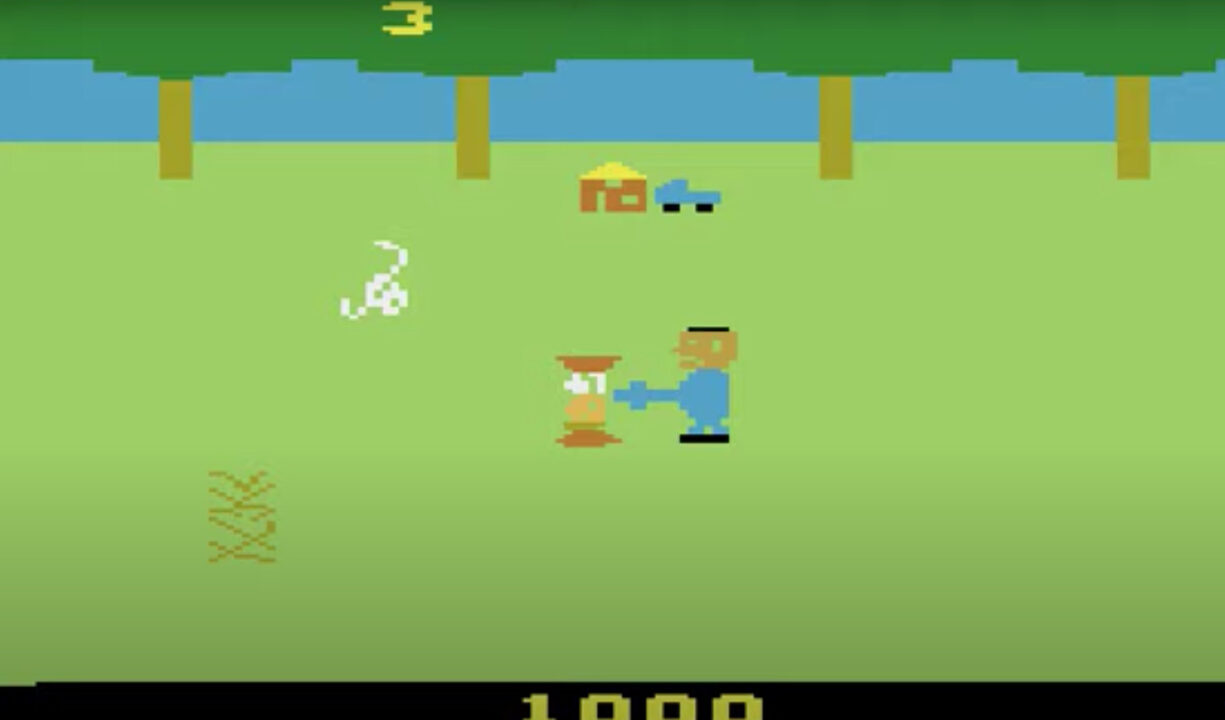
© 1983 Wizard Video. Screenshot: YouTube/@worldoflongplays
The player keeps this up until Leatherface’s chainsaw runs out of gasoline. You can get a sense of the game’s overall sights and sounds in the video below.
Wizard’s Halloween and The Texas Chainsaw Massacre are wonderfully weird and somewhat hilarious, not only in their execution and presentation, but in the fact that these concepts were thought up in the first place.
Clearly, many at the time did not see them as being quite as interesting, and they did not sell very well in 1983. Flash-forward 40 years, though, and these rarities are now sought-after by collectors and people who just want to experience the games, with copies of even just their boxes or instruction manuals, let alone the cartridges themselves, commanding high — often very high — prices.
For example, a set of both game cartridges with instruction manuals seen in the image below (listed by the seller as being in “Very Good” condition) is, at this writing (Oct. 31, 2023), up for sale on eBay at just under $1,200!
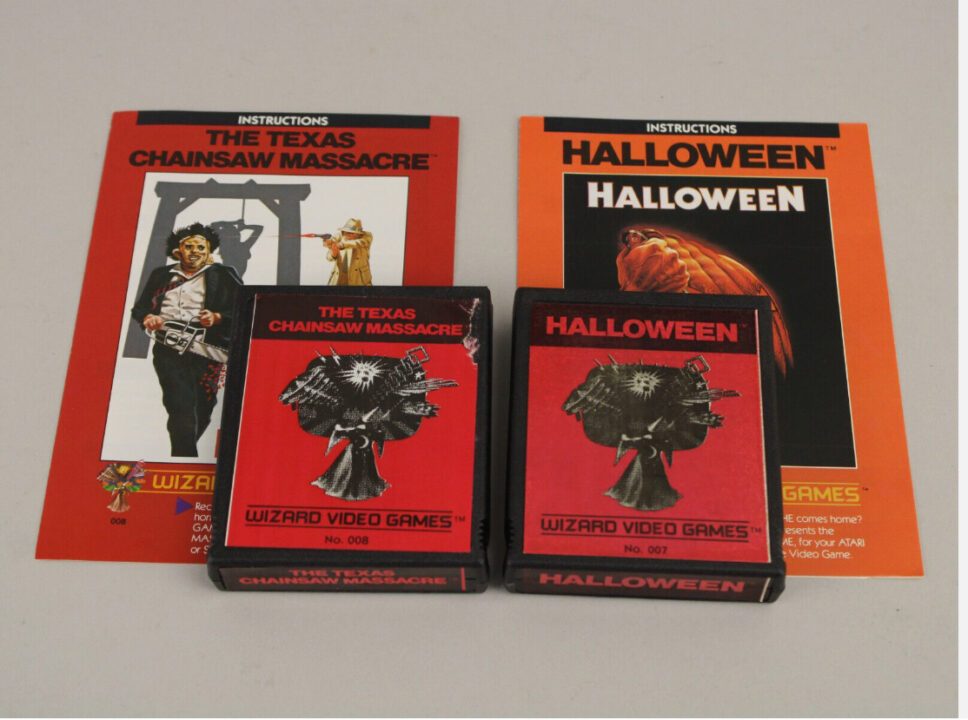
Screenshot from eBay
Now that’s a bloodbath!

